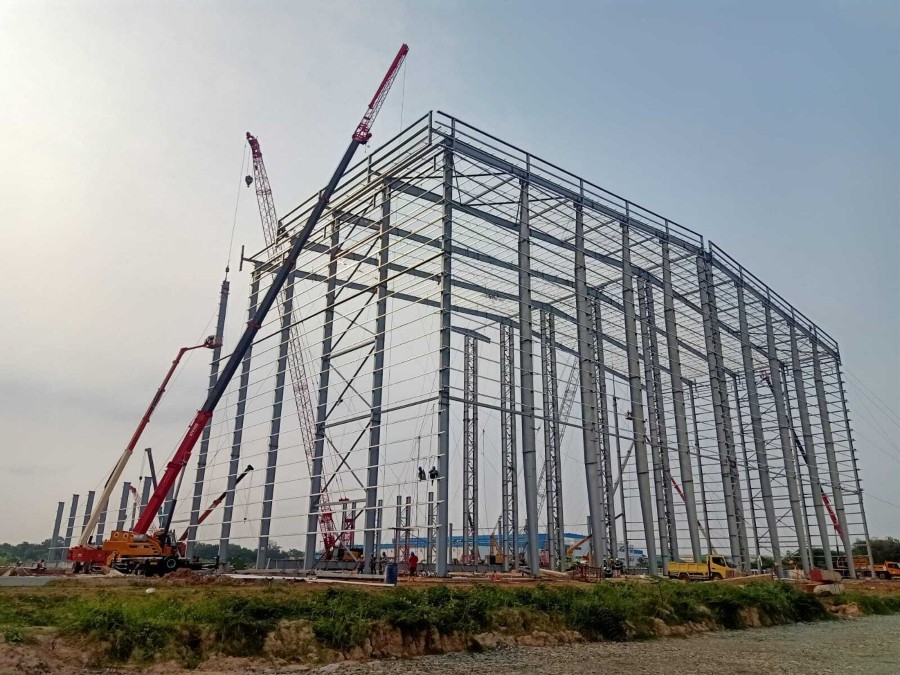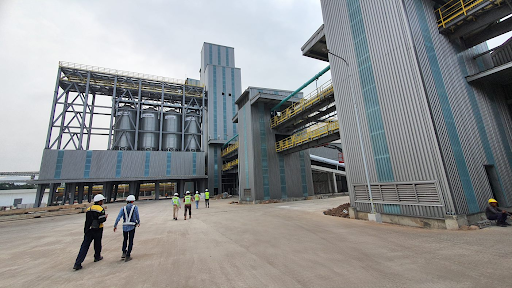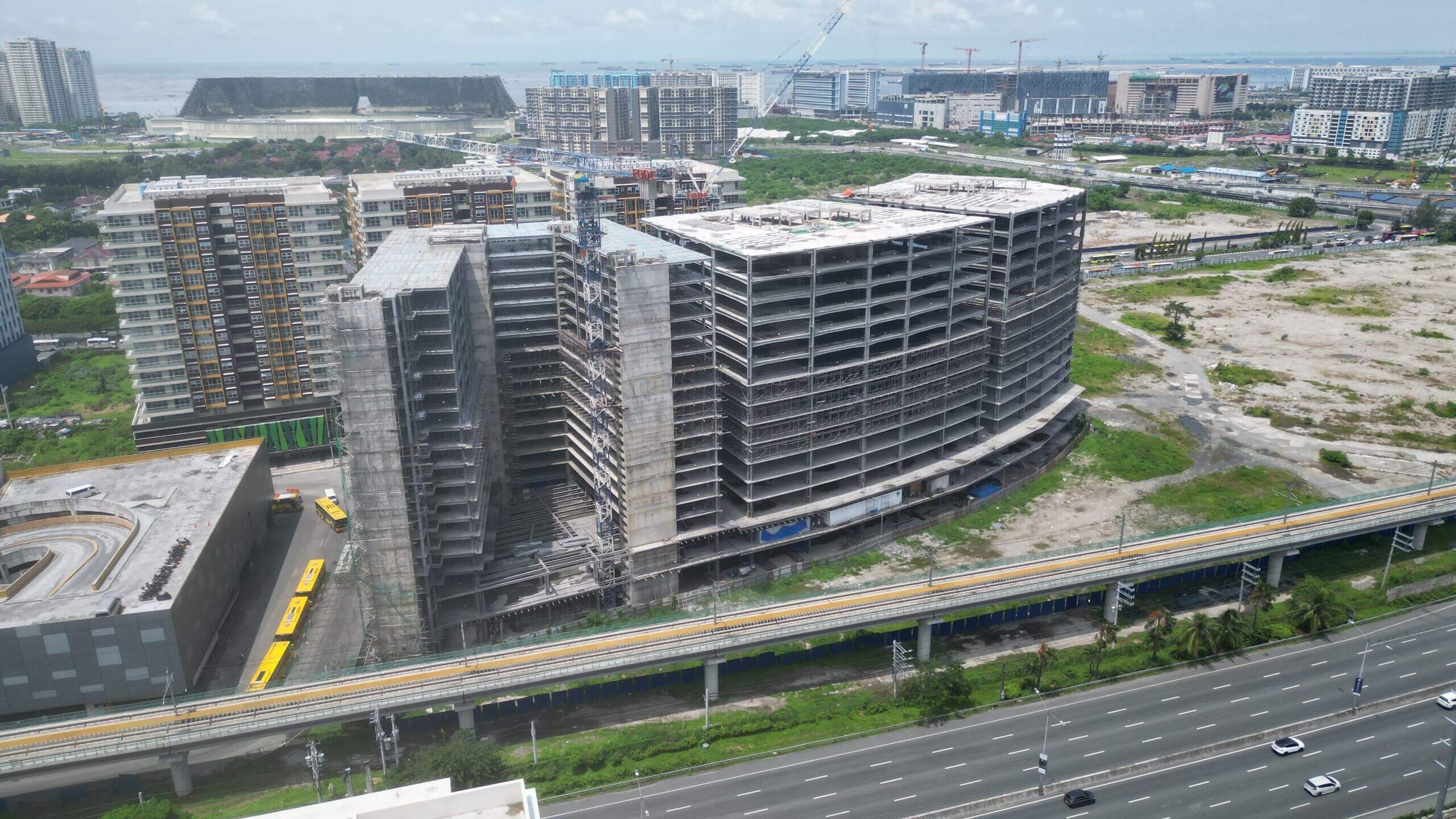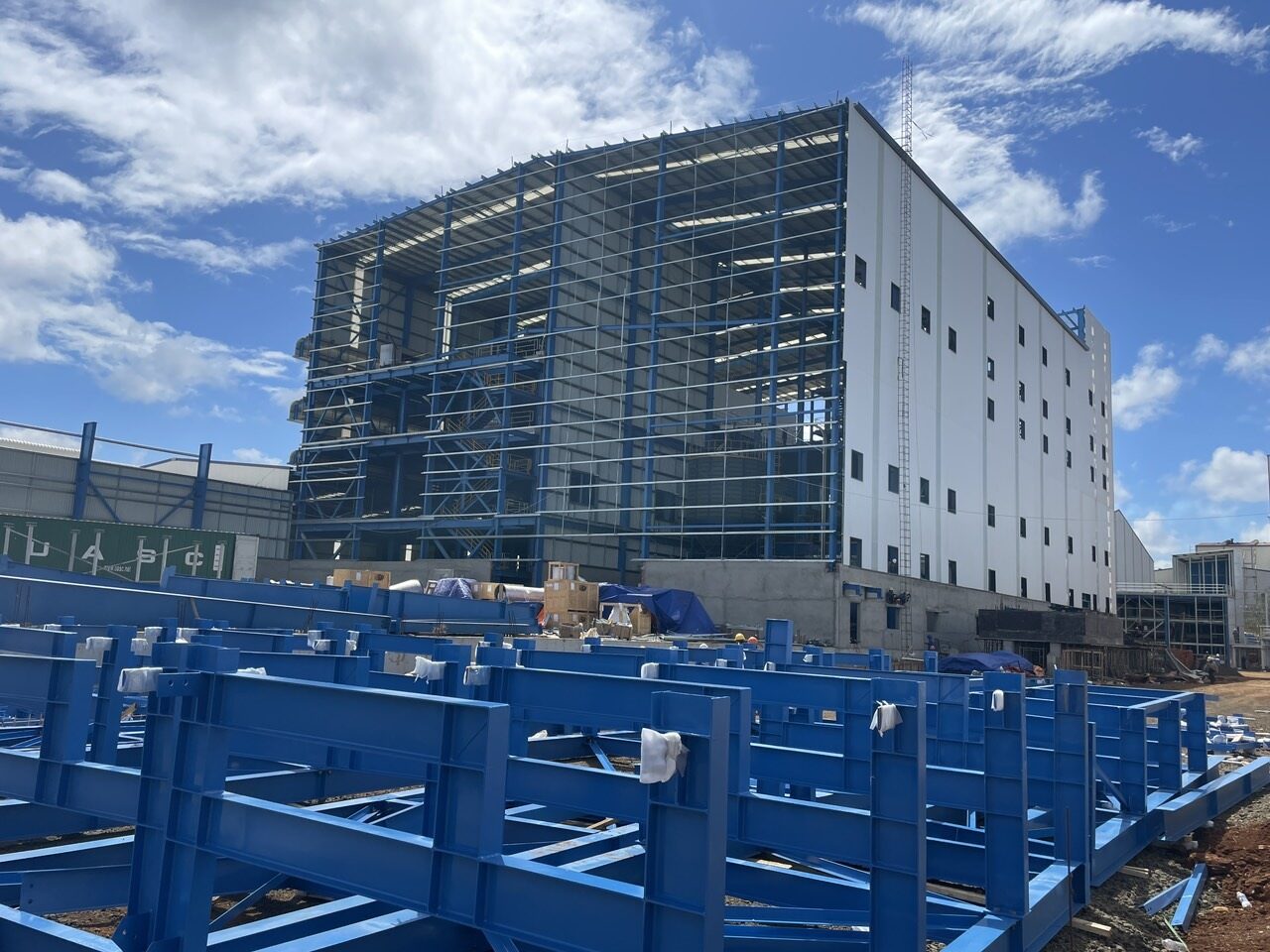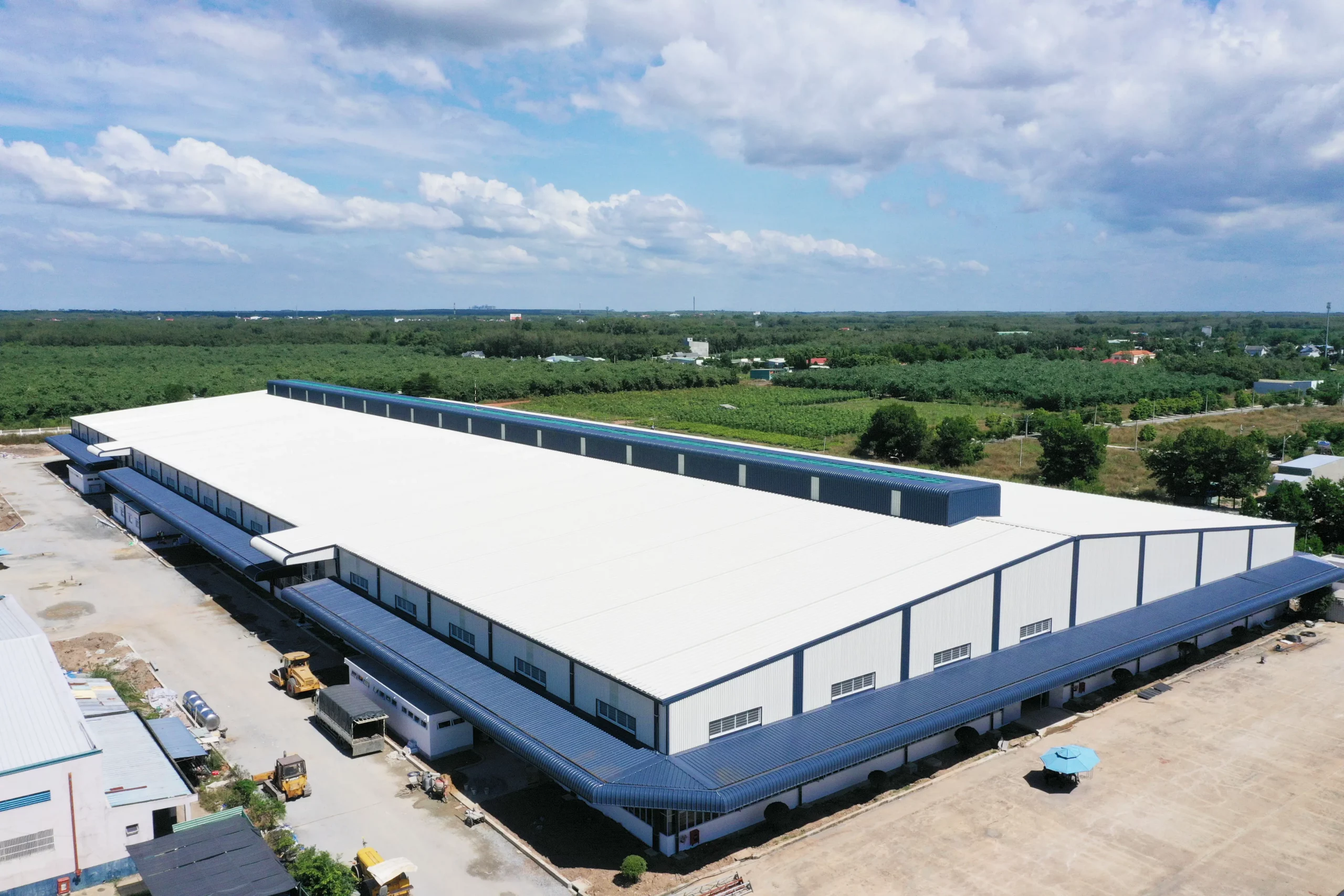Steel structures play a crucial role in the construction industry, especially when facing harsh environmental conditions. From extreme temperatures and corrosive agents to significant seismic activity, steel structures are designed to ensure the safety and durability of buildings. This article provides a comprehensive overview of advanced methods and techniques that help steel structures in extreme environments, ensuring the performance and longevity of constructions.
1. Overview of Steel Structures
Steel structures form the main load-bearing framework of buildings, fabricated from steel and connected using bolts, rivets, or welds. They play a vital role in ensuring the stability, safety, and sustainability of the entire construction.
Classification of Steel Structures:
- Light Steel Structures: These typically use small cross-section steel profiles and tubes, are lightweight, and are mainly used in residential buildings, small to medium-scale factories, and workshops.
- Heavy Steel Structures: These utilize large cross-section steel profiles and tubes with high load-bearing capacity, suitable for industrial buildings, high-rise buildings, bridges, factories, warehouses, and more.
Key Advantages of Steel Structures:
- Superior Durability and Load-Bearing Capacity: Steel has high tensile, compressive, bending, and torsional strength, allowing steel structures to withstand significant static and dynamic loads and harsh external forces such as storms and earthquakes.
- Design Flexibility: Steel structures can be easily modified, expanded, or repurposed according to actual needs.
- Quick and Precise Construction: Structural steel components are pre-fabricated in factories with high precision, transported to the construction site, and quickly assembled using bolts, rivets, or welds, significantly reducing construction time.
- High Aesthetic Value: Steel structures offer a modern and refined appearance, suitable for various architectural styles from classical to contemporary.
- Cost Efficiency: Although the initial investment cost may be higher than other materials, steel structures help save on maintenance, repair, and operational costs throughout their lifecycle.
- Environmental Friendliness: Steel is a fully recyclable material, minimizing construction waste and environmental impact.
Diverse Applications of Steel Structures
Owing to their numerous advantages, steel structures are extensively utilized across various sectors. In residential construction, they are employed in houses, apartments, villas, schools, and hospitals. For industrial purposes, steel structures are ideal for factories, workshops, and warehouses. They also play a crucial role in transportation infrastructure, including bridges, tunnels, and stations. Additionally, steel structures are pivotal in the construction of public buildings such as stadiums, shopping centers, and theaters. Their adaptability makes them particularly suitable for projects with stringent technical requirements, large-scale operations, and demanding construction schedules.
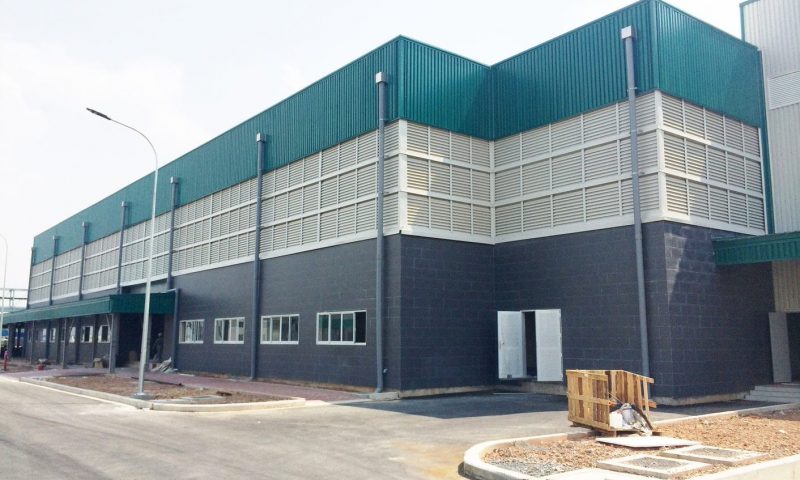
Overview of steel structures – the main load-bearing frame system of the project
2. Steel Structure in Extreme Environments
Steel structures, despite their numerous superior advantages, face significant challenges when operating in extreme environments. However, with advancements in technology and construction materials, engineers have developed effective solutions to ensure the durability and longevity of steel structures under the most extreme conditions.
2.1 High Temperatures
High temperatures are one of the critical factors affecting steel structures. When temperatures rise, steel tends to expand, leading to changes in dimensions, deformation, and even structural instability. Additionally, high temperatures can reduce the strength and fire resistance of steel.
To ensure steel structures can withstand high temperatures, the following measures can be applied:
- Use of heat-resistant steel: Special types of steel, such as heat-resistant alloy steel, can endure high temperatures without deforming or losing strength. Alternatively, selecting steel with a high melting point helps maintain durability under high-temperature conditions.
- Fireproof coatings: Intumescent paint, fireproof mortar, and fireproof boards are used to protect steel structures from direct fire and high temperatures, extending the fire resistance time of the structure.
- Water cooling systems: In case of fire, automatic water spray systems can cool the steel structure, preventing the fire from spreading and protecting the structure from severe damage.
- Expansion joints design: Properly arranged expansion joints in the steel structure help minimize thermal stress and prevent cracking due to the expansion of steel at high temperatures.
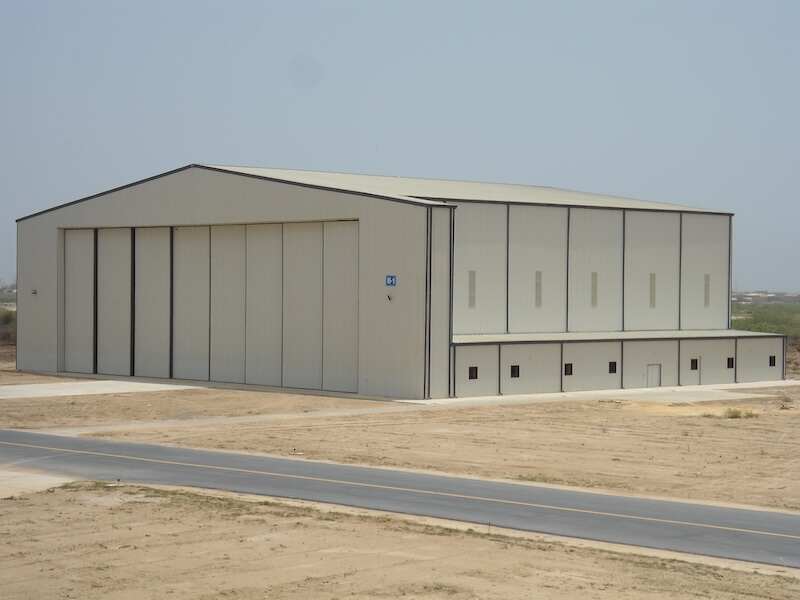
Steel structures in high temperature environments
2.2 Corrosive Environments
Corrosive environments, including marine environments, industrial environments with chemicals, acids, alkalis, etc., pose a significant threat to steel structures. Corrosion occurs silently but continuously, reducing the thickness, cross-section, and load-bearing capacity of the steel, leading to potential safety hazards for the construction. To combat corrosion, steel structures can be protected by the following methods:
- Hot-dip galvanizing: A thick, adherent zinc coating on the steel surface creates an effective barrier against environmental corrosion.
- Anti-corrosion coatings: Epoxy and polyurethane paints can withstand chemical environments, acids, and alkalis, protecting the steel structure from corrosion.
- Use of stainless steel: In particularly extreme environments, stainless steel is an optimal choice due to its superior corrosion resistance.
- Regular inspection and maintenance: Frequent inspections to detect and promptly address signs of corrosion help extend the lifespan of steel structures.
2.3 Seismic Activity
Seismic activity involves the movement of the earth’s crust due to the release of energy from tectonic plates. This energy is released in the form of seismic waves, which can cause ground shaking and destruction, leading to phenomena such as earthquakes and tsunamis. In areas with high seismic activity, buildings and structures must be designed to withstand the forces and vibrations from earthquakes.
Steel, being a highly ductile material, can deform without breaking, making steel structures ideal for resisting seismic forces. Steel structures can absorb and dissipate energy from earthquakes, protecting the building from damage or collapse. Earthquake-resistant design for steel structures includes:
- Special load-bearing frame design: Load-bearing systems such as moment-resisting frames, eccentrically braced frames, and concentrically braced frames are designed to absorb and distribute seismic energy, reducing the impact of earthquakes on the structure.
- Foundation isolation systems: These systems isolate the building from the ground, minimizing the transmission of ground vibrations to the structure.
- Damping structures: Damping devices, such as friction dampers and hydraulic dampers, are installed within the structure to absorb and dissipate seismic energy, reducing shaking and deformation.
- Ductile detailing: Structural elements like beams and columns are designed with high ductility, allowing them to absorb seismic energy without sudden failure.
2.4 Extreme Weather
Extreme weather conditions, including severe storms, prolonged heavy rain, intense heat, or extreme cold, can adversely affect steel structures. Strong winds can cause uplift, drag, and torsional forces on the structure, while heavy rain and high humidity can increase the risk of corrosion.
When constructing steel structures in extreme weather conditions, careful planning and strict adherence to design principles are necessary. Solutions to ensure steel structures withstand extreme weather include:
- Aerodynamic design: Optimizing the shape and structure of the building to minimize wind resistance and increase structural load-bearing capacity.
- Wind-resistant structures: Appropriately arranged cross braces, horizontal braces, and windshields enhance the rigidity and stability of the building against wind forces.
- Protective coatings: Anti-corrosion paints and waterproof coatings protect the steel surface from the effects of rain, humidity, and other corrosive agents.
- Weather-resistant materials: Using alloy steel with high wear resistance, corrosion resistance, and good temperature change tolerance.
2.5 Material Fatigue
Material fatigue is the process of weakening and failure of materials due to repeated cyclic loading over time. This phenomenon occurs when the material is subjected to cyclic loads below its ultimate strength but continuously over an extended period, leading to the development of small cracks. For steel structures, fatigue can occur at stress concentration points such as welds, bolt holes, and section transitions.
In cyclic loading environments, steel structures can be designed to resist fatigue by using high-strength materials and enhancing the fatigue life of the materials. Additionally, monitoring systems can be used to detect early signs of cracking and prevent significant damage.

Measures to use steel structure in extreme environments
Designing steel structures in harsh environments is a complex challenge, requiring an in-depth understanding of both the steel material and the environmental factors at play. To explore optimal solutions for steel structures in demanding conditions, as well as the diverse applications of steel in construction, please visit our website for more information. If you are looking for comprehensive solutions in steel structure construction, contact Pebsteel via email at marketing@pebsteel.com.vn or hotline: at (+84) 908 883 531 for consultation!
*** This article is intended to provide general information about the pre-engineered steel building and steel structure industry only. For further details or clarification based on your needs, please contact Pebsteel directly.






